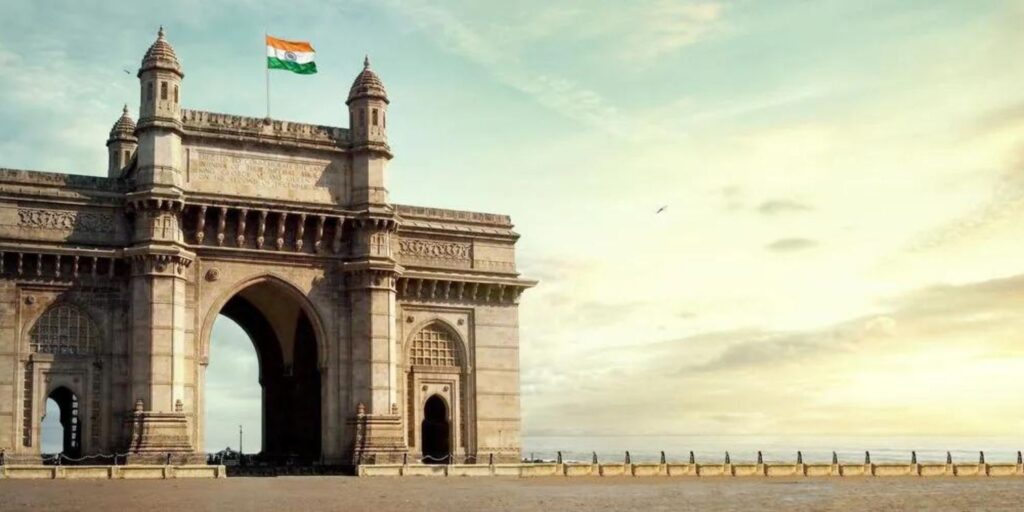With its diverse landscapes, vibrant cultures, and historical marvels, North India is a captivating destination for every avid traveler.
From the majestic Himalayan ranges to the arid beauty of Rajasthan, the northern part of India unfolds many experiences. This comprehensive guide will take a virtual tour of 46 must-visit tourist places in North India
1. The Great Himalayan National Park, Himachal Pradesh

The Great Himalayan National Park, nestled in the Kullu district of Himachal Pradesh, stands as a testament to nature’s grandeur.
Spanning over 1,171 square kilometers, this UNESCO World Heritage Site is a sanctuary for diverse flora and fauna.
They are offering a network of trekking trails that wind through the landscapes.
Treks like the Sainj Valley and Tirthan Valley provide glimpses of the park’s rich biodiversity, from the vibrant orchids to elusive Himalayan wildlife, including the Himalayan Tahr and the elusive Snow Leopard.
Beyond its natural allure, the Great Himalayan National Park offers a serene escape, with the Tirthan and Parvati valleys providing a tranquil backdrop for those seeking solace in the lap of nature.
Whether you’re an avid trekker, a wildlife enthusiast, or someone yearning for a retreat amidst pristine landscapes, this national park in Himachal Pradesh beckons with open arms.
2. Rishikesh and Haridwar, Uttarakhand

As we journey south, the twin cities of Rishikesh and Haridwar unfold, perched along the banks of the sacred Ganges River in Uttarakhand.
These cities aren’t just spiritual havens but vibrant hubs of culture, adventure, and tranquility.
Rishikesh, known as the ‘Yoga Capital of the World,’ draws seekers from around the globe to its ashrams and yoga retreats.
The city is a gateway to the Himalayas, offering spiritual rejuvenation and thrilling adventures like trekking and river rafting.
The iconic Laxman Jhula and Ram Jhula, suspended over the Ganges, add to the city’s mystical charm.
Haridwar, downstream from Rishikesh, is a sacred city that comes alive during the Kumbh Mela, a massive Hindu pilgrimage that attracts millions.
The Ganga Aarti played on the ghats of Haridwar, a captivating ritual illuminating the riverbanks with a divine glow.
The blend of spirituality and adventure makes Rishikesh and Haridwar essential stops for those exploring the tourist places in North India.
3. Gulmarg, Jammu and Kashmir
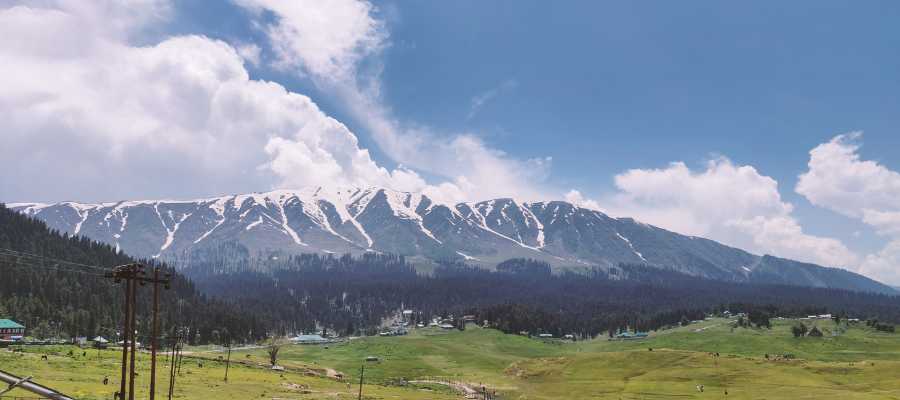
Moving northwest, we find ourselves in the mesmerizing landscapes of Gulmarg in the Union Territory of Jammu and Kashmir.
Known as a winter wonderland, Gulmarg transforms into a snowy haven during winter, attracting skiers and snow enthusiasts worldwide.
Adventure seekers can indulge in skiing, snowboarding, and snowshoeing on the powdery slopes.
In the summer, Gulmarg metamorphoses into a lush meadow adorned with vibrant flowers, making it an ideal destination for golfing, trekking, and nature walks.
The versatility of Gulmarg, with its blend of winter sports and summer charm, makes it a must-visit destination for tourists exploring the northern delights of India.
4. Jaipur, The Pink City, Rajasthan
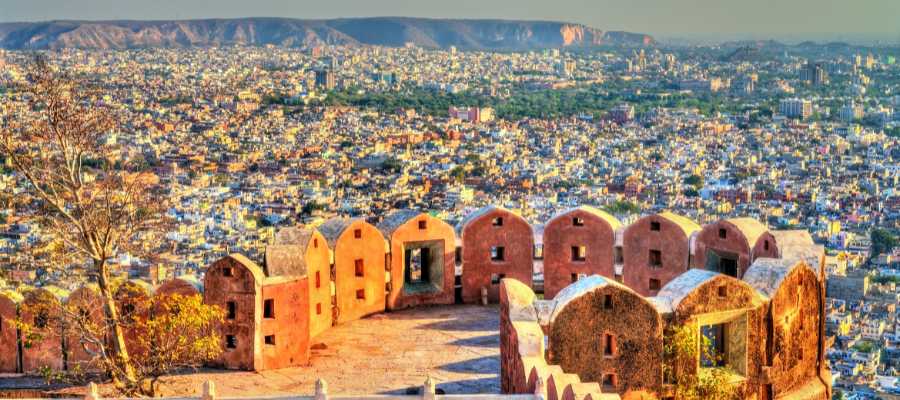
Jaipur, the capital of Rajasthan, earned its moniker, The Pink City, in 1876. This historic city is a visual feast, showcasing a seamless blend of tradition and modernity.
The intricate architecture, vibrant frescoes, and the mesmerizing Peacock Gate make it a captivating experience.
The Amer Fort, perched on the Aravalli Range, is a majestic fortification with panoramic views of Maota Lake.
The Sheesh Mahal within the fort is a glittering chamber adorned with intricate mirrorwork. Jaigarh Fort, overlooking Amer Fort, is home to the world’s largest cannon on wheels – Jaivana.
Jaipur’s cultural vibrancy comes alive during festivals like Diwali and Holi.
The city is also known for its grand celebration of Teej, a festival dedicated to the Goddess Parvati, marked by processions, folk dances, and traditional music.
The Elephant Festival, held annually, showcases the majestic animals adorned with vibrant colors and intricate patterns.
5. Udaipur, The City of Lakes, Rajasthan

At the heart of Udaipur’s charm lies its enchanting lakes, each echoing the city’s grandeur.
Lake Pichola, the largest of Udaipur’s lakes, welcomes visitors with open arms, showcasing the picturesque Jag Mandir and Jag Niwas (Lake Palace) on its tranquil waters.
The City Palace, an architectural marvel standing on the east bank of Lake Pichola, offers a breathtaking panorama of the city’s palaces, temples, and the Aravalli Hills.
The serene waters reflect the grandeur of Udaipur’s palaces, creating a poetic scene that captures the essence of the City of Lakes.
The Saheliyon Ki Bari, a historic garden nestled on the banks of Fateh Sagar Lake, adds to the city’s regal ambiance with its fountains, kiosks, and marble elephants.
Udaipur, The City of Lakes, is a captivating chapter in the narrative of Tourist Places in North India. Its lakes, palaces, and cultural heritage create an atmosphere of regal charm and serenity.
Whether navigating the tranquil waters of Lake Pichola, exploring the opulent City Palace, or indulging in the region’s culinary delights, Udaipur leaves an indelible mark on the hearts of travelers.
As you journey to this crown jewel of Rajasthan, let the City of Lakes enchant you with its timeless beauty and regal grace.
Udaipur awaits, ready to offer a royal escape amidst the grandeur of North India.
6. Jaisalmer, The Golden City, Rajasthan

With its iconic golden-hued architecture, ancient forts, and a rich cultural tapestry, Jaisalmer invites travelers to a captivating journey through time and desert landscapes.
In this exploration, we unveil the enchanting allure of Jaisalmer, a city that glistens like gold amidst the treasures of North India.
Jaisalmer’s proximity to the Thar Desert makes it a gateway to thrilling desert experiences. A desert safari, especially in the Sam Sand Dunes, is a quintessential part of the Jaisalmer visit.
For those seeking a more adventurous experience, dune bashing in 4×4 vehicles adds an adrenaline-pumping element to the journey through the golden expanse.
7. Agra, The Taj Mahal, Uttar Pradesh

As one of the most iconic tourist places in North India, Agra unfolds a narrative of historical opulence, cultural richness, and architectural brilliance.
In this exploration, we delve into the majestic world of Agra, primarily focusing on the unparalleled splendor of The Taj Mahal.
Agra’s claim to fame, The Taj Mahal, is a marvel that transcends time and borders.
As you approach the complex, the sheer magnitude and ethereal beauty of The Taj Mahal leave an indelible mark on every visitor.
The intricate marble inlay work, symmetrical gardens, and the iconic reflection pool create a scene of unparalleled beauty.
The changing hues of The Taj Mahal at different times of the day, from the soft morning glow to the romantic hues of sunset, evoke a myriad of emotions and contribute to its status as an enduring symbol of eternal love.
The intricate marble inlay work, symmetrical gardens, and the iconic reflection pool create a scene of unparalleled beauty.
The changing hues of The Taj Mahal at different times of the day, from the soft morning glow to the romantic hues of sunset, evoke a myriad of emotions and contribute to its status as an enduring symbol of eternal love.
8. Varanasi, The Spiritual Capital, Uttar Pradesh
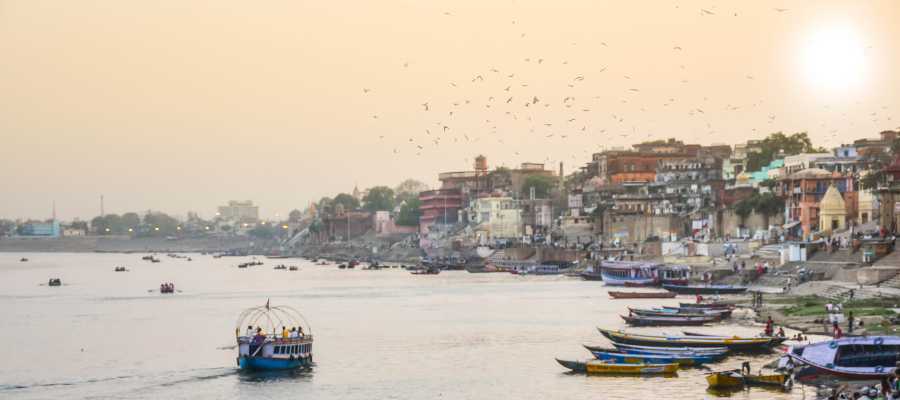
Varanasi, often known as the Spiritual Capital, is a city that pulsates with an energy deeply rooted in spirituality and ancient traditions.
On the banks of the sacred Ganges River in Uttar Pradesh, Varanasi is one of the oldest, always-occupied cities in the world, boasting a history of over 3,000 years.
a) Spiritual Significance
The city is revered by Hindus, who believe that dying in Varanasi and having one’s ashes scattered in the Ganges leads to moksha, liberation from the cycle of reincarnation.
The ghats, especially the Dashashwamedh Ghat and Manikarnika Ghat, are central to spiritual practices and rituals.
The Ganga Aarti, a mesmerizing ritual performed every evening, is a spectacle that attracts pilgrims and tourists alike.
b) Historical and Cultural Marvels
Varanasi is a repository of historical and cultural treasures. The Kashi Vishwanath Temple, a reminder of our Lord Shiva, is one of the most sacred Gods for Hindus.
The Sarnath Stupa, where Lord Buddha gave his first sermon, is another significant site.
c) Spiritual Exploration
Navigating through the narrow alleys and vibrant markets, visitors encounter a myriad of temples, ashrams, and traditional music echoing through the air.
The city is a haven for seekers, yogis, and those seeking spiritual enlightenment.
In Varanasi, spirituality intertwines with the everyday life of its inhabitants, creating an atmosphere that is both mystic and deeply rooted in tradition.
The city’s timeless allure makes it a must-visit destination for those looking for a profound spiritual experience.
9. Fatehpur Sikri, Uttar Pradesh

a) Historical Tapestry
Fatehpur Sikri is a city frozen in time, offering a glimpse into the grandeur of the Mughal era.
Commissioned by Emperor Akbar in the 16th century, Fatehpur Sikri was also the capital of the Mughal Empire for a short-lived period.
b) Architectural Brilliance
The city boasts architectural marvels like the Buland Darwaza, a colossal gateway, and the Jama Masjid, a grand mosque.
The Panch Mahal, a five-story palace, showcases intricate structures and offers scenic views of the surrounding terrain.
The Diwan-i-Khas, adorned with a central pillar featuring 36 serpentine brackets, reflects the luxury of the Mughal rulers.
c) Abandonment and Preservation
Despite its architectural splendor, Fatehpur Sikri was abandoned due to water shortages.
However, the well-preserved structures and the meticulous layout of the city provide a fascinating insight into the Mughal architectural and urban planning prowess.
d) Cultural Heritage
The amalgamation of Hindu, Persian, and Mughal architectural styles in Fatehpur Sikri creates a unique cultural tapestry.
The city’s red sandstone structures, intricate carvings, and sprawling courtyards transport visitors to a bygone era of imperial grandeur.
Fatehpur Sikri is a silent witness to history, inviting travelers to wander through its deserted streets and marvel at the architectural brilliance that defines this once-thriving Mughal capital.
10. Khajuraho, The Temple City, Madhya Pradesh
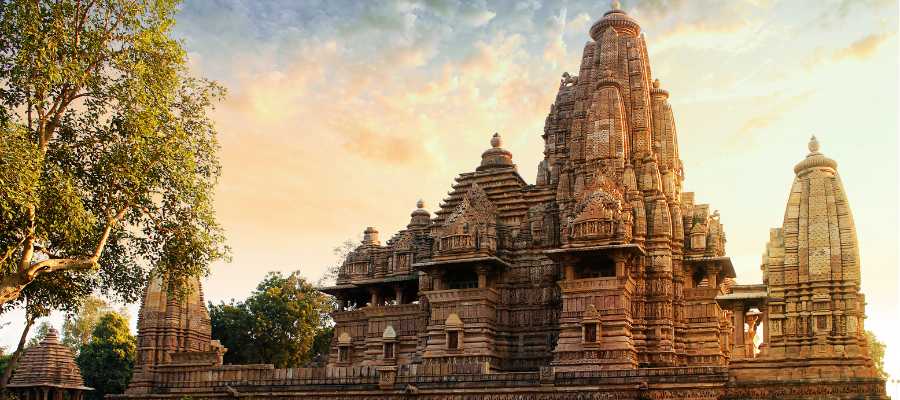
a) Architectural Extravaganza
Khajuraho, situated in the heart of Madhya Pradesh, is renowned for its stunning temples adorned with intricate erotic sculptures.
Built in 950 and 1050 CE, these holy places uniquely blend Hindu and Jain architectural styles.
b) Erotic Sculptures
The temples are famous for their explicit and aesthetically appealing erotic carvings, portraying various aspects of human life and relationships.
These intricate depictions symbolize the union between the physical and the spiritual.
c) Spiritual Significance
While the erotic sculptures garner significant attention, the temples depict various deities and mythological stories.
The Lakshmana Temple, Kandariya Mahadeva Temple, and Vishvanatha Temple stand as prime examples of the architectural and artistic brilliance of the Chandela dynasty.
d) Cultural Heritage
Khajuraho is a testament to the creative and cultural achievements of ancient India. The sculptures, with their intricate details and symbolic meanings, provide insights into the society, beliefs, and values of the time.
e) Light and Sound Show
The Group of Temples hosts an amazing light and sound show in the evenings, narrating the history and legends associated with Khajuraho.
The show adds a magical touch to the total experience, helping visitors to immerse themselves in the historical charm of the temple city.
With its architectural splendor and cultural richness, Khajuraho remains a destination that transcends time, inviting travelers to explore the fascinating interplay of spirituality and artistry.
11. The Golden Temple, Amritsar, Punjab

Amritsar, situated in the northwestern state of Punjab, is a city that resonates with the heartbeat of Sikhism.
At its core lies the glorious Golden Temple, Harmandir Sahib, which symbolizes spiritual devotion, community service, and architectural magnificence.
The spiritual resonance of the Golden Temple is amplified by the continuous recitation of Gurbani (Sikh scriptures) and the soul-stirring kirtans (devotional songs).
Amritsar bears witness to a poignant chapter in Indian history at Jallianwala Bagh.
This public garden memorializes the tragic massacre that occurred in 1919 when British troops opened fire on a peaceful gathering, resulting in hundreds of casualties.
The Martyrs’ Well and the Flame of Liberty are reminders of the sacrifices made during India’s struggle for independence.
With its Golden Temple at the heart, Amritsar is a city that radiates spiritual vibrancy, cultural richness, and a commitment to humanitarian values.
The Golden Temple, with its architectural brilliance and spiritual sanctity, is not just a place of worship but a symbol of inclusivity and service.
Amritsar, as a whole, stands as a testament to the resilience, faith, and vibrant spirit of Punjab in North India.
12. Pushkar, The Holy City, Rajasthan

Pushkar is a sacred city renowned for its holy lake, temples, and vibrant ghats. The Pushkar Lake, surrounded by 52 ghats and numerous temples, holds immense religious significance and was meant to be created by Lord Brahma.
a) Brahma Temple
With its red spire and intricate architecture, the temple attracts pilgrims and tourists seeking blessings and spiritual solace.
b) Pushkar Camel Fair
The city comes alive during the annual Pushkar Camel Fair, one of the world’s largest camel fairs.
The fair showcases livestock trading and features cultural events, music, dance, and the renowned camel race, adding a festive and lively atmosphere to Pushkar.
c) Spiritual Retreat
Pushkar is an essential site for Hindus, drawing devotees who believe that taking a dip in the holy Pushkar Lake cleanses them of their sins.
The ghats, particularly the Brahma Ghat and Varaha Ghat, witness rituals, prayers, and aarti ceremonies that create a serene and spiritually charged ambiance.
d) Colorful Bazaars
The streets of Pushkar are adorned with vibrant markets, offering a plethora of traditional Rajasthani handicrafts, textiles, and jewelry.
The colorful bazaars add to the cultural richness of Pushkar, providing visitors with an opportunity to immerse themselves in the local lifestyle.
With its blend of spirituality, cultural vibrancy, and desert landscapes, Pushkar stands as a unique destination in the vast tapestry of tourist places in North India.
The city’s timeless charm and sacred aura make it a captivating retreat for those seeking a harmonious blend of tradition and tranquility.
13. Jim Corbett National Park, Uttarakhand

Nestled in the foothills of the Himalayas in Uttarakhand, Jim Corbett National Park is a pristine wilderness that beckons nature enthusiasts and wildlife lovers.
It is India’s first national park, established in 1936 as Hailey National Park. Renamed after the legendary hunter and conservationist Jim Corbett, the park spans Nainital, Pauri Garhwal, and Almora districts.
The park is home to various wildlife, including the Bengal tiger, Asian elephant, leopard, and over 600 species of birds.
The Ramganga River meanders through the park, providing a lifeline to its inhabitants and creating a picturesque landscape.
Dhikuli, situated on the banks of the Ramganga River, offers stunning views of the park and is an ideal spot for birdwatching. Nearby, Corbett Falls cascades through the lush greenery, providing a refreshing retreat for visitors.
a) Wildlife Sanctuary and Tiger Reserve
Jim Corbett is India’s oldest national park and a haven for wildlife enthusiasts.
Named after the legendary hunter and naturalist Jim Corbett, it is known for its diverse flora and fauna, including the Bengal tiger.
The lush landscapes, meandering rivers, and dense forests create an ideal habitat for various species of mammals, birds, and reptiles.
b) Safari Adventures
The park offers safari experiences, allowing visitors to explore its different zones.
Jeep and elephant safaris provide opportunities to spot the rich wildlife, including elephants, deer, leopards, and the elusive Bengal tiger.
The park is for birdwatchers, with over 600 species of avian residents and migratory birds.
c) Corbett Museum
For those interested in the history of wildlife conservation in India, the Corbett Museum in Kaladhungi is a must-visit.
The museum showcases artifacts, personal belongings, and manuscripts of Jim Corbett, offering insights into his life and the early days of wildlife conservation efforts in the region.
d) Dhikala Zone
The Dhikala Zone within the park is famous for its diverse landscapes, ranging from grasslands to dense forests.
The Ramganga River flowing through the zone adds to its scenic beauty.
Dhikala is a popular spot for wildlife sightings, and the watchtower overlooking the river provides an excellent vantage point.
e) Conservation Efforts
Jim Corbett National Park plays a crucial role in conserving endangered species, and various initiatives are undertaken to preserve the delicate ecosystem.
The park serves as a sanctuary for wildlife and contributes to environmental education and research.
With its rich biodiversity and commitment to wildlife conservation, Jim Corbett National Park remains a cherished destination for nature lovers and adventure seekers.
The surroundings of Corbett Waterfall offer ample space for picnics and strolls. Families and groups of friends often visit the area to enjoy a day out in nature, relishing the beauty of the waterfall and the peaceful atmosphere.
14. Ranthambore National Park, Rajasthan
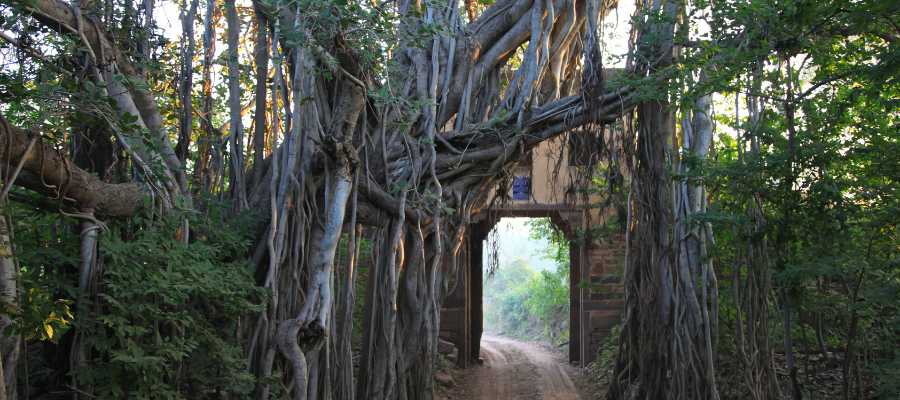
Spread across 392 square kilometers, the park was once a hunting ground for the Maharajas of Jaipur. Today, it is a prominent wildlife sanctuary and one of the best places in India to spot the elusive Bengal tiger.
Ranthambore National Park, situated in the Sawai Madhopur community of Rajasthan, is a renowned wildlife sanctuary and one of the best places in India to spot the majestic Bengal tiger.
The park’s historical significance is heightened by the formidable Ranthambore Fort, which adds to the allure of the natural landscapes.
a) Tiger Safaris
The park’s diverse topography, including grasslands, lakes, and dense forests, provides an ideal habitat for various wildlife species.
b) Historical Ranthambore Fort
The fort’s grandeur and panoramic views of the surrounding landscapes make it a popular attraction for history enthusiasts and photographers.
c) Padam Talao and Malik Talao
Ranthambore is dotted with picturesque lakes, including Padam Talao and Malik Talao.
These water bodies are watering holes for the park’s inhabitants, making them prime spots for wildlife sightings, especially during the scorching summer months.
d) Jungle Excursions and Conservation Initiatives
Apart from tiger safaris, Ranthambore offers jungle excursions, birdwatching, and nature walks.
The park actively engages in conservation initiatives, contributing to wildlife protection and preserving their natural habitats.
With its combination of documented richness and wildlife splendor, Ranthambore National Park invites visitors to remember an unforgettable trip through the realm of the Bengal tiger.
Ranthambore is renowned for its diverse ecosystem, including dry deciduous forests, grasslands, and water bodies.
Apart from the Bengal tiger, the park has leopards, sloth bears, marsh crocodiles, and a rich bird species. The iconic Ranthambore Fort, towering over the park, adds a historical charm to the landscape.
Safari experiences in Ranthambore are a thrilling way to explore the park’s diverse habitats. The three main zones – Core Zone, Buffer Zone, and Kaila Devi Sanctuary – provide different perspectives of the park’s wildlife.
The park’s numerous water bodies, including Padam Talao and Malik Talao, attract wildlife during the scorching summer months.
Crocodile sightings and various bird species make these lakes prime locations for wildlife enthusiasts and photographers.
With its regal history and thriving wildlife, Ranthambore National Park continues to capture the imaginations of those seeking a unique blend of nature and heritage.
15. Kaziranga National Park, Assam
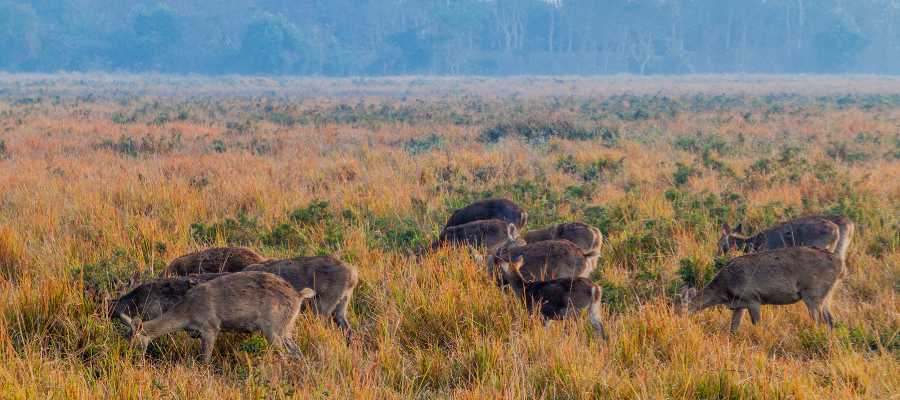
Kaziranga is globally recognized for its successful conservation efforts, particularly in safeguarding the Indian one-horned rhinoceros.
The park houses the largest population of this endangered species, providing a critical sanctuary for their survival.
Besides rhinoceros, Kaziranga is home to Bengal tigers, Asiatic elephants, wild water buffaloes, and many bird species.
The park’s diverse ecosystems include grasslands, wetlands, and dense forests, creating a unique habitat for its inhabitants.
Visitors to Kaziranga can explore the park through jeep and elephant safaris, offering close encounters with the wildlife.
The park’s rangers and conservationists work tirelessly to protect the rhinoceros and other species from poaching, ensuring the park remains a thriving ecosystem.
The Panbari Range, with its elevated terrain, provides panoramic views of Kaziranga’s landscapes.
From here, visitors can witness the vast grasslands, water bodies, and the majestic Brahmaputra River, creating an awe-inspiring vista.
Kaziranga offers jeep and elephant safaris, providing a unique opportunity to witness the iconic one-horned rhinoceros in their natural habitat.
a) Breathtaking Landscapes
The landscapes of Kaziranga are as diverse as its wildlife.
The park features grasslands, wetlands, and dense forests, creating a mosaic of habitats that support a thriving ecosystem.
The Brahmaputra River adds to the scenic beauty of the park.
b) Orang National Park
For those exploring the wildlife of Assam, Orang National Park is another gem.
Known for its population of Indian rhinoceros, wild buffaloes, and tigers, Orang provides a unique wildlife experience in a less-explored setting.
c) Conservation Success
Kaziranga’s success in conservation is reflected in the increasing population of the one-horned rhinoceros.
The park’s management actively engages in anti-poaching efforts and community-based conservation initiatives, making it a model for wildlife conservation globally.
With its diverse ecosystems and commitment to preserving endangered species, Kaziranga National Park stands as a testament to Assam’s natural heritage.
Kaziranga is a wildlife sanctuary and a testament to the region’s cultural heritage.
The traditional Mishing and Karbi villages surrounding the park add a cultural dimension to the overall experience, allowing visitors to immerse themselves in the local way of life.
With its conservation success story and unique biodiversity, Kaziranga National Park stands as a shining example of the efforts to protect and preserve India’s natural treasures.
16. Badrinath, Uttarakhand
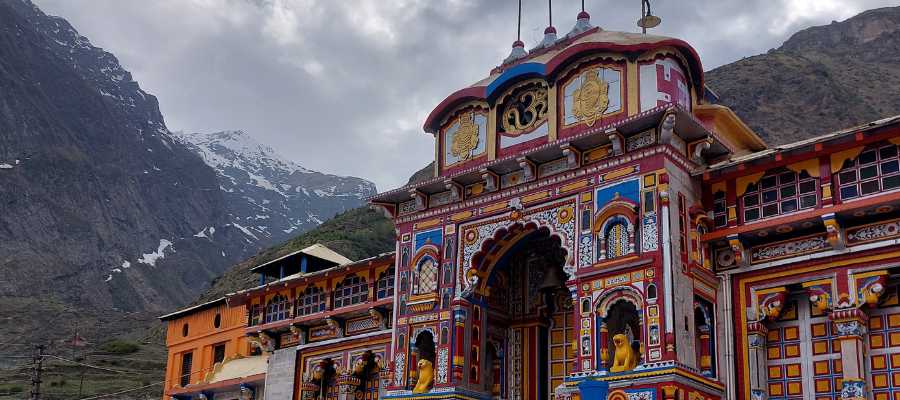
Nestled in the lap of the Himalayas, Badrinath is a revered pilgrimage site in Uttarakhand, perched at an elevation of 3,133 meters.
It is one of the four Char Dham sites and holds immense significance in Hinduism. Dedicated to Lord Badri, an incarnation of Lord Vishnu, the town is surrounded by snow-capped peaks, making it a spiritual haven amidst nature’s grandeur.
The town’s focal point is the Badrinath Temple, an ancient and sacred shrine. The temple’s intricate architecture, with its conical spire, stands against the backdrop of the Neelkanth Peak.
Pilgrims visit Badrinath to seek blessings and perform rituals at this revered abode of Lord Vishnu.
Mana, the last village before the Indo-China border, is close to Badrinath, offering a glimpse into the local culture and traditions.
Pilgrims dip in these hot springs before entering the temple, considering it auspicious and purifying. The therapeutic properties of the springs add a rejuvenating element to the spiritual journey.
The Neelkanth Peak, named after Lord Shiva, forms a stunning backdrop to Badrinath.
Trekking enthusiasts can undertake the trek to Charanpaduka, a rock bearing the footprints of Lord Vishnu, offering breathtaking views of the Neelkanth Peak and the surrounding mountains.
With its blend of spirituality and natural splendor, Badrinath beckons devotees and travelers seeking a divine connection amidst the Himalayan landscapes.
Near Badrinath lies Mana Village, the last inhabited village before the Indo-Tibetan border. The village is known for its cultural significance and proximity to the mystical Saraswati River.
Visitors can explore the unique lifestyle of the locals and witness the confluence of the Alaknanda and Saraswati rivers.
a) Valley of Flowers
This breathtaking valley is adorned with many colorful alpine flowers and is a haven for nature lovers and botanists.
b) Hot Springs and Tapt Kund
Pilgrims often dip in the natural hot springs, Tapt Kund, near the Badrinath Temple. The belief is that the holy waters have healing properties, and ritual purification is integral to the pilgrimage.
With its spiritual significance and awe-inspiring landscapes, Badrinath beckons both devotees and nature enthusiasts to experience Uttarakhand’s divine and natural wonders.
17. Kedarnath, Uttarakhand

Nestled amidst the Garhwal Himalayas, Kedarnath is a sacred town in Uttarakhand, revered by Hindus as one of the Char Dham sites.
Reaching Kedarnath involves a pilgrimage trek of approximately 16 kilometers from Gaurikund. The journey takes pilgrims through picturesque landscapes, including lush meadows, pine forests, and the Mandakini River.
Pony rides and palanquins are also available for those who prefer a less strenuous ascent.
Kedarnath, situated in the Rudraprayag district of Uttarakhand, is one of the holiest shrines for Hindus. Dedicated to Lord Shiva, the Kedarnath Temple is part of the Char Dham Yatra and holds immense religious significance.
a) Pilgrimage Trek
The journey to Kedarnath involves trekking through picturesque landscapes and crossing rivers and dense forests.
Pilgrims undertake this spiritual trek, known as the Kedarnath Yatra, as a form of penance and devotion.
The trek gives spectacular views of snow-capped mountains and the Mandakini River.
b) Bhairavnath Temple
Adjacent to the Kedarnath Temple is the Bhairavnath Temple, which is dedicated to Bhairav, a fierce manifestation of Lord Shiva.
The temple is an integral part of the pilgrimage and holds cultural and religious significance.
c) Kedarnath Wildlife Sanctuary
The sanctuary adds a touch of natural beauty to the pilgrimage, and fortunate trekkers may encounter Himalayan wildlife.
d) Spiritual Serenity
Kedarnath, surrounded by snow-clad peaks, exudes a sense of spiritual serenity.
The temple’s stone architecture and the natural surroundings create a divine ambiance, inviting devotees to seek solace and connect with the divine.
With its challenging pilgrimage trek and spiritual significance, Kedarnath remains a sacred destination in the lap of the Himalayas that beckons those in search of both adventure and divine blessings.
Adjacent to the Kedarnath Temple is the Bhairon Temple, dedicated to Lord Bhairon, a fierce form of Lord Shiva.
Pilgrims believe their pilgrimage is complete only after visiting the Kedarnath and Bhairon temples.
The trek to Chorabari Tal, also known as Gandhi Sarovar, and Vasuki Tal, two glacial lakes near Kedarnath, offers breathtaking views of the surrounding peaks.
These lakes are surrounded by pristine landscapes and are considered sacred by the locals
18. Vaishno Devi, Jammu and Kashmir

Perched amidst the Trikuta Mountains in Jammu and Kashmir, the Vaishno Devi Temple is a sacred pilgrimage destination that draws millions of devotees annually.
Dedicated to Goddess Vaishno Devi, the temple is approximately 5,200 feet and requires a challenging trek.
The journey to Vaishno Devi involves a trek of around 13 kilometers from Katra, the base camp. Pilgrims can also hire ponies or use a helicopter for a part of the journey. The culmination of the trek takes devotees to the holy cave, where the deity resides in three natural rock formations called Pindis.
The Vaishno Devi pilgrimage is not just a physical journey; it’s a spiritual quest that symbolizes devotion and faith. Pilgrims believe that the Goddess fulfills their wishes, and the arduous journey demonstrates their unwavering dedication.
En route to the holy cave, pilgrims pass through Ardhkuwari, a halfway point where it is believed that the Goddess meditated for nine months. The Bhairon Temple near the cave is another significant stop where devotees pay their respects.
The region’s natural beauty adds a serene and peaceful dimension to the pilgrimage.
Vaishno Devi’s spiritual aura and picturesque landscapes remain an enduring symbol of devotion and a destination where faith is tested and strengthened.
19. Shimla, Himachal Pradesh
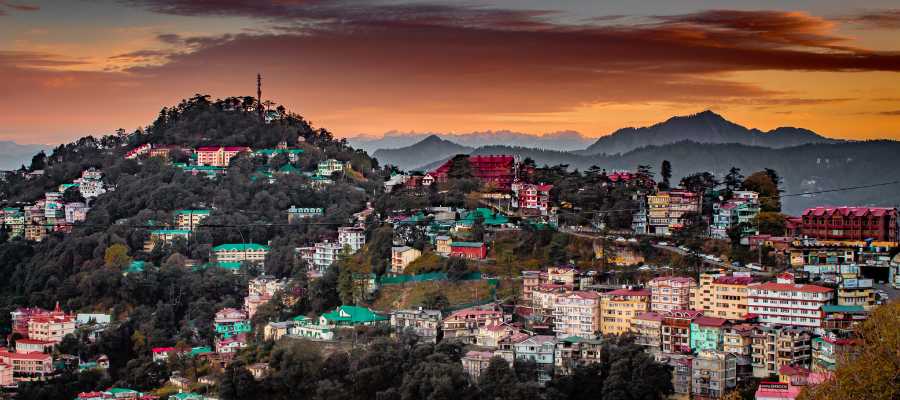
a) Queen of the Hills
A majestic haven where nature’s beauty reigns supreme, offering serenity and breathtaking vistas.
b) Mall Road
Strolling along the Mall, visitors can enjoy panoramic views of the mountains and indulge in shopping for local handicrafts and souvenirs.
c) The Ridge
Offering a stunning view of the snow on the Himalayas and is a venue for various cultural events and festivals. The Christ Church, located on the Ridge, is an iconic landmark.
d) Viceregal Lodge
For history enthusiasts, the Viceregal Lodge, also known as Rashtrapati Niwas, is a must-visit.
e) Jakhoo Temple
Perched atop Jakhoo Hill, the Jakhoo Temple, dedicated to Lord Hanuman, is a significant religious site. The climb to the temple provides panoramic views of Shimla and the Himalayan ranges. The giant Hanuman statue at the temple is a popular attraction.
With its scenic beauty, colonial architecture, and vibrant atmosphere, Shimla enchants visitors, offering a perfect blend of history, culture, and natural splendor.
20. Nainital, Uttarakhand

The centerpiece of Nainital, Naini Lake is a crescent-shaped water body that reflects the surrounding hills and the distant snow-capped peaks. Boating on the lake is a serene experience, offering breathtaking views of the town and its scenic beauty.
a) The Mall Road
The Mall Road of Nainital is a vibrant promenade with shops, restaurants, and colonial-style buildings. Evening strolls along the Mall, with the twinkling lights and a cool breeze from the lake, create a magical ambiance.
b) Naina Devi Temple
Perched atop the northern shore of Naini Lake is the Naina Devi Temple, dedicated to Goddess Naina Devi. The temple holds religious significance and offers panoramic views of the lake and surrounding hills.
c) Snow View Point
For a panoramic view of the Himalayan ranges, Snow View Point is a popular vantage point accessible by a cable car. The breathtaking scenery of the snow-clad peaks against the clear blue sky is a highlight for nature enthusiasts.
21. Darjeeling, West Bengal
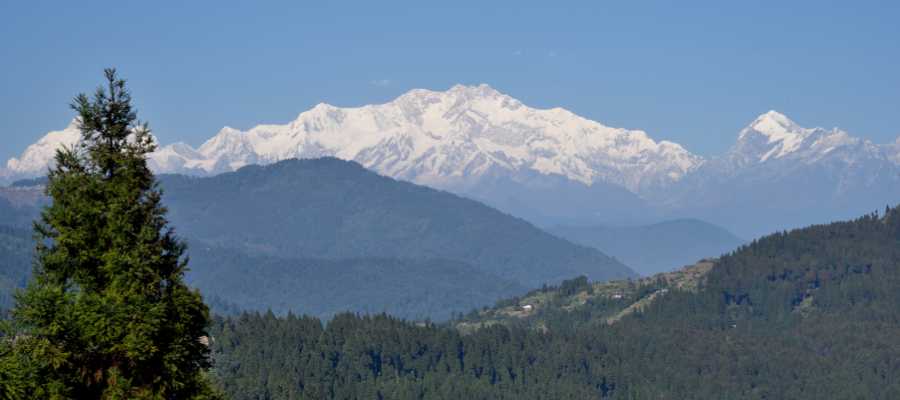
a) Tea Capital of India
Perched on the slopes of the Lesser Himalayas in West Bengal, Darjeeling is renowned as the “Queen of the Hills” and the “Tea Capital of India.” Its lush tea gardens, panoramic views of the Eastern Himalayas, and temperate climate make it a favorite destination for nature lovers.
b) Darjeeling Himalayan Railway
The Batasia Loop, a spiral track, is a highlight of the journey.
c) Tiger Hill
Tiger Hill is the go-to destination for a spectacular sunrise view over the Kanchenjunga mountain range. The sky’s changing colors, and the sun’s first rays illuminating the peaks create a mesmerizing spectacle.
d) Padmaja Naidu Himalayan Zoological Park
Home to the endangered red panda and the elusive snow leopard, the Padmaja Naidu Himalayan Zoological Park is a conservation center dedicated to preserving Himalayan fauna.
e) Peace Pagoda
The Peace Pagoda, a symbol of peace and harmony, stands on the slopes of Jalapahar Hill. Surrounded by lush greenery, the pagoda offers panoramic views of Darjeeling and the Himalayas.
Darjeeling, with its enchanting landscapes, cultural richness, and the aroma of fresh tea in the air, invites travelers to experience the serenity of the hills and savor the unique charm of this Himalayan retreat.
22. Manali, Himachal Pradesh
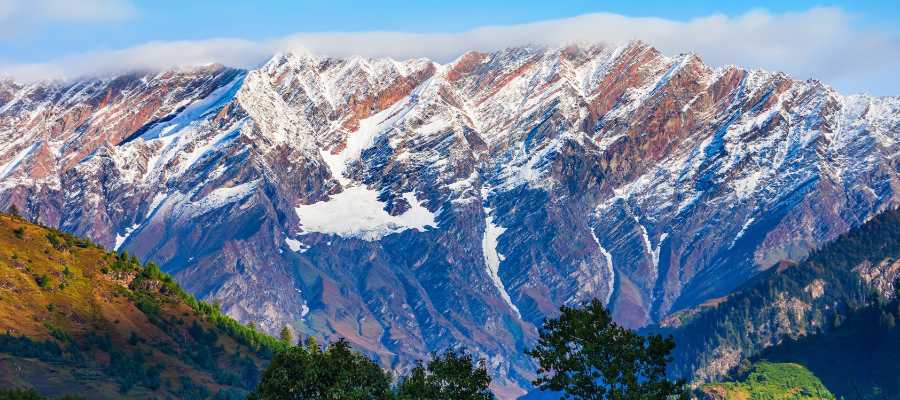
Manali is a haven for adventure enthusiasts. The nearby Solang Valley is a hub for paragliding, zorbing, and skiing activities. At the same time, the iconic Rohtang Pass, accessible during the summer months, offers breathtaking views of the surrounding peaks.
a) Old Manali and Hadimba Devi Temple
Old Manali contrasts the bustling main town with its narrow lanes, vibrant cafes, and rustic charm. The Hadimba Devi Temple, surrounded by cedar forests, is a sacred site with its distinctive pagoda-style architecture and tranquil setting.
b) Vashisht Hot Springs
For those seeking relaxation, the Vashisht Hot Springs, with their natural sulfur springs, offers a soothing experience amidst the Himalayan landscapes. The village of Vashisht also boasts ancient temples and traditional architecture.
c) Beas River and Great Himalayan National Park
The Beas River meanders through Manali, offering opportunities for river rafting and serene walks along its banks.
Manali, with its blend of adventure, culture, and natural beauty, remains a sought-after destination that caters to a diverse range of travelers.
23. McLeod Ganj (Dharamshala), Himachal Pradesh

Nestled in the Kangra Valley of Himachal Pradesh, McLeod Ganj, also known as Little Lhasa, is known as the home of the 14th Dalai Lama and is a prominent center of Tibetan culture and spirituality. The town, a suburb of Dharamshala, is perched at about 2,082 meters.
a) Tsuglagkhang Complex
The heart of McLeod Ganj is the Tsuglagkhang Complex, which houses the Namgyal Monastery, the residence of the Dalai Lama, and the Tsuglagkhang Temple. Pilgrims and visitors can explore the complex, attend teachings, and witness the peaceful coexistence of Tibetan and Indian cultures.
b) Trekking and Bhagsu Falls
Beyond the Dhauladhar Range, McLeod Ganj offers trekking opportunities, with Triund being a popular trekking destination known for its panoramic views. The nearby Bhagsu Falls, cascading through the lush greenery, provides a refreshing retreat for nature lovers.
c) Tibetan Handicrafts and Cuisine
The streets of McLeod Ganj are adorned with Tibetan handicraft shops offering traditional artifacts, thangkas, and colorful clothing. The town’s culinary scene reflects Tibetan influences, with momos and thupka being local favorites.
d) Dharamkot and Dharamshala Cricket Stadium
Visitors can venture to Dharamkot, a small village near McLeod Ganj, for panoramic views of the surrounding mountains. The Dharamshala Cricket Stadium, one of the highest cricket stadiums in the world, is a unique attraction for sports enthusiasts.
McLeod Ganj is a unique destination fostering spiritual exploration and cross-cultural exchange with its serene monastic atmosphere, natural beauty, and cultural richness.
24. Srinagar, Jammu and Kashmir

a) Jewel in the Vale of Kashmir
Srinagar is a jewel in the breathtaking Vale of Kashmir.
b) Dal Lake and Houseboats
Dal Lake, with its pristine waters and backdrop of lush Mughal gardens, is the heart of Srinagar. Visitors can experience the unique charm of staying in houseboats, intricately decorated floating homes that offer a tranquil escape from the bustling city.
c) Shikara Rides and Floating Gardens
Exploring Dal Lake on a shikara, a traditional wooden boat, is a quintessential Srinagar experience. The Shalimar and Nishat Bagh Mughal Gardens add terraced lawns and vibrant flowerbeds to the city’s allure.
d) Jama Masjid and Shankaracharya Temple
Srinagar is a testament to its multicultural heritage. The Jama Masjid, with its Indo-Saracenic architecture, stands as a symbol of the city’s Muslim influence. Atop a hill, the Shankaracharya Temple provides panoramic views of Srinagar and the surrounding mountains.
e) Hazratbal Shrine and Mughal Road
Beyond the city, the historic Mughal Road connects Srinagar to Poonch and Rajouri, offering picturesque views of the Pir Panjal range.
25. Ladakh, Jammu and Kashmir
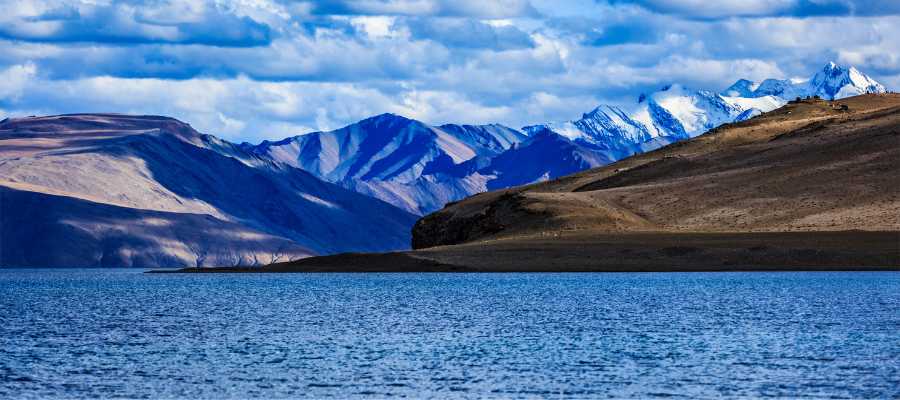
Ladakh, often called the “Land of High Passes,” is a region in the northernmost part of Jammu and Kashmir. Between the Kunlun mountain range and the Himalayas, Ladakh is known for its stark landscapes, ancient monasteries, and vibrant Tibetan-Buddhist culture.
a) Leh and Thiksey Monastery
The capital city of Ladakh, Leh, is surrounded by snow-capped peaks and is a gateway to various monasteries. Thiksey Monastery, perched on a hill, is a major attraction with its impressive architecture and panoramic views of the Indus Valley.
b) Pangong Lake and Nubra Valley
With its ever-changing hues of blue, Pangong Lake stretches across the India-China border and is a surreal destination for nature enthusiasts. Nubra Valley, accessible via the Khardung La Pass, offers a unique landscape with dunes, monasteries, and the famous Diskit Monastery.
c) Hemis Monastery and Magnetic Hill
Hemis Monastery, one of Ladakh’s largest and wealthiest monasteries, hosts the vibrant Hemis Festival. The Magnetic Hill, known for its optical illusion of vehicles rolling uphill, adds a touch of mystery to the region.
26. Chandigarh

Also known as the “City Beautiful,” Chandigarh is celebrated for its organized layout, green spaces, and cultural vibrancy.
a) Rock Garden and Sukhna Lake
The Rock Garden of Chandigarh, created by artist Nek Chand, is a unique sculpture garden made from industrial and home waste.
The garden showcases a labyrinth of artistic creations, providing a surreal and creative experience. Sukhna Lake, an artificial reservoir, offers a serene escape with boating and scenic views.
b) Capitol Complex and Open Hand Monument
The Capitol Complex, designed by Le Corbusier, is a UNESCO World Heritage Site and houses government buildings with distinctive architectural features. The Open Hand Monument, an iconic symbol of Chandigarh, represents peace and reconciliation.
c) Rose Garden and Sector 17 Plaza
Zakir Hussain Rose Garden, Asia’s largest rose garden, boasts thousands of rose varieties and is a colorful oasis for nature lovers. Sector 17 Plaza, the commercial hub, is a bustling area with shops, restaurants, and cultural events.
d) Chhatbir Zoo and Elante Mall
Chhatbir Zoo, located on the outskirts, is a wildlife sanctuary where visitors can explore diverse fauna. Elante Mall, being one of the biggest malls in North India, caters to shopping and entertainment needs.
With its urban aesthetics, cultural attractions, and green spaces, Chandigarh is a model city that seamlessly integrates modernity with planned development.
27. Delhi, The Capital City
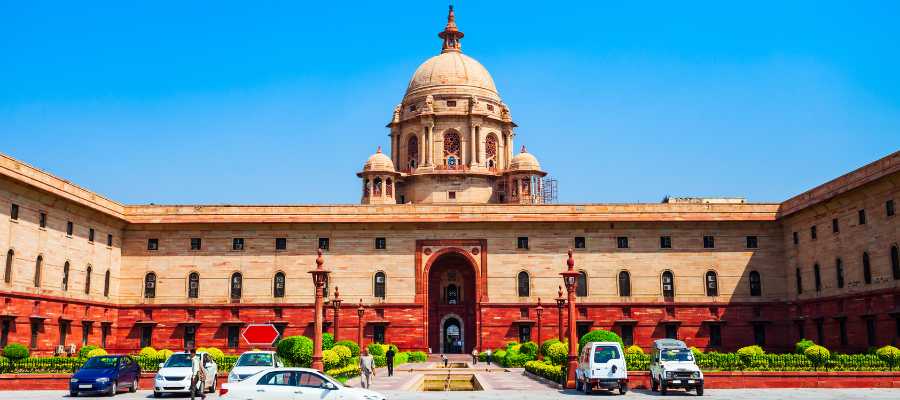
Delhi, the capital city of India, is a vibrant metropolis that weaves together a rich tapestry of history, culture, and modernity. The city has been witness to the rise and fall of empires, the confluence of diverse cultures, and the shaping of the nation’s destiny.
a) Historical Landmarks
Delhi boasts an array of historical landmarks that reflect its multifaceted past. India Gate, an iconic war memorial, pays homage to the soldiers who sacrificed their lives during World War I.
b) Qutub Minar and Humayun’s Tomb
The Qutub Minar, a towering symbol of Indo-Islamic architecture, and Humayun’s Tomb, a masterpiece of Mughal design, exemplify Delhi’s architectural heritage.
Both are UNESCO World Heritage Sites, offering glimpses into different periods of the city’s history.
c) Cultural Melting Pot
Delhi’s cultural diversity is mirrored in its bustling markets, where old and new coexist harmoniously.
Chandni Chowk, one of the oldest markets, encapsulates the essence of Delhi’s street life, offering everything from traditional street food to vibrant textiles.
d) Contemporary Delhi
With its sprawling infrastructure, Modern Delhi is a hub of political, economic, and cultural activities. Connaught Place is a central commercial and recreational area with its colonial architecture.
The Delhi Metro, a marvel of modern transportation, connects different corners of the city.
e) Culinary Delights
Delhi is a haven for food enthusiasts, offering a gastronomic journey through its diverse neighborhoods.
From street-side chaat to Mughlai delicacies in Old Delhi, from contemporary fine dining in South Delhi to eclectic offerings in Hauz Khas Village, the city’s culinary scene reflects its multicultural identity.
With its blend of ancient history and modern dynamism, Delhi remains a captivating destination that beckons travelers to explore its myriad facets.
28. Auli, Uttarakhand

Auli, nestled in the Garhwal Himalayas of Uttarakhand, is a pristine hill station that transforms into a snowy wonderland during winter.
Famous for its panoramic views, meadows, and skiing opportunities, Auli stands as a testament to the natural beauty of the Himalayan region.
a) Skiing Capital
Auli is renowned as one of the best skiing destinations in India. With its snow-covered slopes and well-developed infrastructure, it attracts adventure enthusiasts from around the globe.
The Auli Ski Resort offers skiing facilities and breathtaking vistas of the surrounding peaks.
b) Gurso Bugyal and Kwani Bugyal
Beyond skiing, Auli offers trekking opportunities to explore its alpine meadows. Gurso Bugyal and Kwani Bugyal are high-altitude meadows that come alive with vibrant flowers during the spring and summer months, providing a picturesque landscape for trekkers.
c) Auli Artificial Lake
The Auli Artificial Lake adds to the charm of the region.
d) Joshimath and Auli Ropeway
Auli is connected to Joshimath by a scenic ropeway, providing breathtaking views of the Himalayas. Joshimath, an important pilgrimage site, is the gateway to Badrinath, one of the Char Dham destinations.
With its pristine landscapes and adventure offerings, Auli is a haven for nature lovers and thrill-seekers seeking a tranquil retreat amidst the Himalayas.
29. Kanha National Park, Madhya Pradesh

The park’s diverse ecosystems support many wildlife, including leopards, Indian wild dogs, sloth bears, and various bird species.
a) Kanha Meadows and Bamni Dadar
Kanha Meadows, known as Kanha’s open grasslands, offers ideal spots for wildlife sightings.
b) Conservation Initiatives
The park’s dedicated team of forest officials and conservationists work tirelessly to ensure the preservation of its unique ecosystems and the welfare of its inhabitants.
With its enchanting wilderness and conservation success stories, Kanha is a testament to the importance of preserving India’s natural heritage.
30. Hampi, Karnataka (Northern Karnataka)
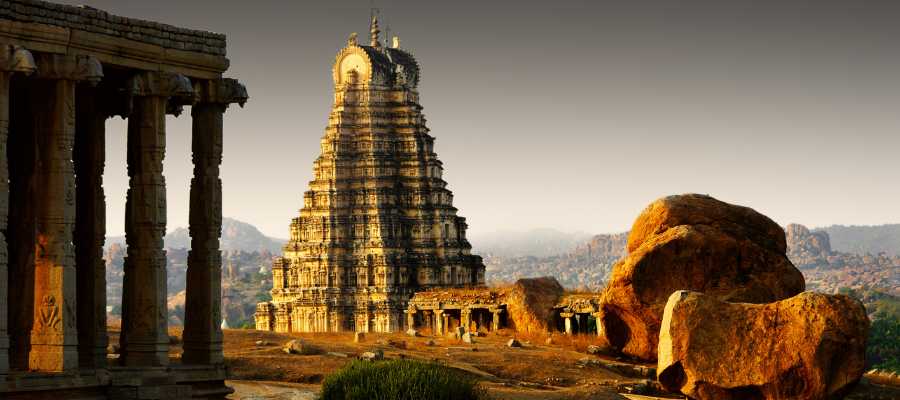
this is a trove of ancient ruins, temples, and historical artifacts sprawled across a mesmerizing landscape of boulders and riverbanks.
It is a treasure trove of ancient ruins, temples, and historical artifacts, all spread across a mesmerizing landscape of boulders and riverbanks.
a) Vitthala Temple and Stone Chariot
The Vitthala Temple is an architectural marvel that features the iconic Stone Chariot, a symbol of Hampi.
b) Hemakuta Hill and Virupaksha Temple
Hemakuta Hill offers panoramic views of the Hampi ruins and is dotted with numerous temples.
c) Elephant Stables and Lotus Mahal
The Elephant Stables, a row of chambers, and the Lotus Mahal, an ornate structure with arched windows, showcase the architectural brilliance of the Vijayanagara Empire. These structures are testimony to the city’s grandeur during its zenith.
d) Badami and Pattadakal
Hampi is part of the larger historical and cultural circuit that includes Badami and Pattadakal.
31. Mathura and Vrindavan, Uttar Pradesh

The Kesava Deo Temple, also known as the Krishna Janmasthan Temple Complex, is a major pilgrimage site with its main deity housed in the underground dance.
a) Vrindavan’s Temples and Ghats
The Banke Bihari Temple, dedicated to Krishna’s “Supreme Enjoyer” form, and the ISKCON Temple, a global center for Krishna consciousness, attract devotees worldwide.
b) Govardhan Hill and Radha Kund
Govardhan Hill, associated with the legend of Lord Krishna lifting the hill to protect the villagers, is a sacred site for devotees. Radha Kund, a holy tank believed to be created by the tears of Radha, is a significant pilgrimage spot.
c) Yamuna Aarti and Holi Celebrations
The ghats along the Yamuna River witness the enchanting evening aarti ceremonies, with lamps floating on the river, creating a divine ambiance.
Vrindavan is especially vibrant during Holi, the festival of colors, as the city comes alive with joyous celebrations.
Mathura and Vrindavan, with their deep-rooted spiritual heritage and cultural vibrancy, continue to be an integral part of the pilgrimage circuit, drawing devotees and history enthusiasts alike to their sacred landscapes.
32. Lansdowne, Uttarakhand
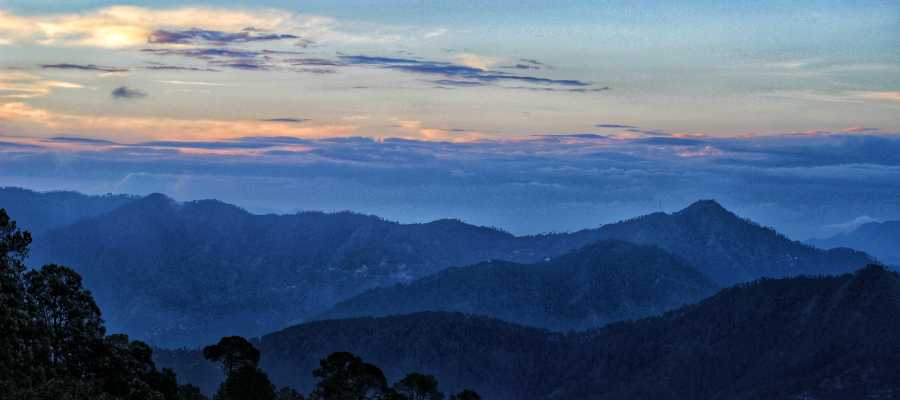
Known for its Garhwali culture and heritage, Lansdowne provides visitors with a glimpse into the local way of life. The War Memorial in Lansdowne is a poignant reminder of the sacrifice of Garhwali soldiers.
The Garhwali Museum showcases artifacts and memorabilia, offering insights into the region’s history.
a) Scenic Beauty
The scenic beauty of Lansdowne is characterized by lush green landscapes, panoramic views of the snow-capped Himalayas, and meandering streams. Bhulla Lake, surrounded by tall pine trees, is a serene spot for boating and picnics.
b) Tiffin Top and Snow Viewpoint
Tiffin Top, also known as Shatabdi Dwar, and Snow Viewpoint are vantage points that provide breathtaking views of the surrounding mountains. The clear skies and fresh mountain air make these spots perfect for photography and quiet contemplation.
c) Bhim Pakora and St. Mary’s Church
Bhim Pakora, a unique geological formation, is a set of large stones balanced precariously on each other. St. Mary’s Church, built during the British era, is an architectural gem with its serene ambiance and stained glass windows.
With its idyllic setting and cultural richness, Lansdowne is a hidden gem in the Himalayas, inviting travelers to unwind in its serene embrace.
33. Ranikhet, Uttarakhand
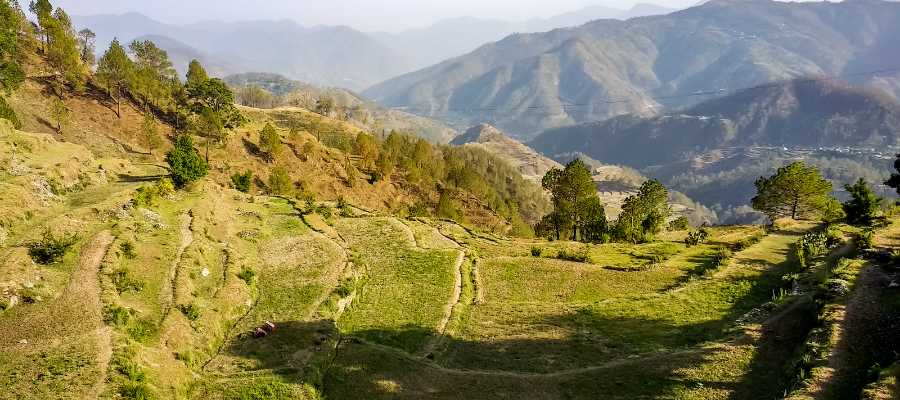
Ranikhet is a hill station in Uttarakhand, surrounded by the Western Himalayas. Perched at around 1,869 meters
a) Jhula Devi Temple
Jhula Devi Temple in Ranikhet is dedicated to Goddess Durga. The temple is known for its bells. The rhythmic sound of countless bells creates a unique spiritual ambiance.
b) Kumaon Regimental Centre Museum
Ranikhet is home to the Kumaon Regimental Centre Museum, which showcases the history and achievements of the Kumaon Regiment. The museum exhibits artifacts, weapons, and memorabilia, offering a glimpse into the brave history of the regiment.
c) Chaubatia Gardens and Upat Kalika Temple
Chaubatia Gardens, known for its orchards and vibrant flowers, is a delightful place for nature lovers.
d) Majhkhali and Bhalu Dam
Majhkhali, a quaint village near Ranikhet, offers a serene escape with its verdant landscapes. Bhalu Dam, surrounded by dense forests, is a peaceful spot for picnics and birdwatching.
With its colonial charm, lush landscapes, and cultural heritage, Ranikhet remains a destination that captures the essence of a tranquil Himalayan retreat.
34. Valley of Flowers, Uttarakhand

Reaching the Valley of Flowers involves a trek from Govindghat, and the journey itself is a trekking enthusiast’s delight.
a) Wildlife and Nanda Devi National Park
The Valley of Flowers, with its ecological significance and unparalleled beauty, beckons nature lovers and adventure seekers to explore its enchanting realms.
35. Hemis, Jammu, and Kashmir
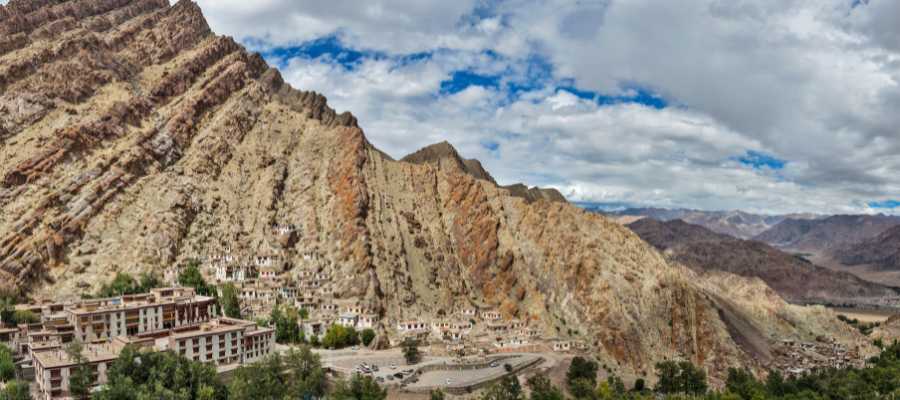
The Hemis Festival, held annually, is a vibrant celebration that attracts locals and tourists. The masked dance performances, known as Cham dances, depict various spiritual stories and highlight the festival.
The colorful costumes, traditional music, and the lively atmosphere make the festival a cultural extravaganza.
a) Hemis National Park
Hemis is also home to the Hemis National Park, one of the largest national parks in India. The park is a habitat for the elusive snow leopard, Himalayan blue sheep, and various species of migratory birds.
The park’s stunning landscapes, with snow-capped peaks and alpine meadows, make it a paradise for nature enthusiasts.
b) Taktok Monastery and Shey Palace
Near Hemis, the Taktok Monastery, perched on a hill, offers panoramic views of the Indus Valley. Shey Palace, a historic site, was once the summer retreat of the kings of Ladakh and houses a 12-meter-high Shakyamuni Buddha statue.
c) Stok Palace and Matho Monastery
The Stok Palace, still inhabited by the Ladakhi royal family, is a cultural treasure trove with its museum showcasing royal artifacts.
Matho Monastery, known for its Oracle Matho Nagrang Festival, provides insights into the region’s spiritual practices.
With its blend of spirituality, natural beauty, and cultural richness, Hemis is a destination offering a holistic and enriching experience.
36. Nubra Valley, Ladakh

Nubra Valley is a breathtaking destination, surrounded by snow-capped peaks, dunes, and lush greenery along the Shyok River.
a) Diskit Monastery and Maitreya Buddha
The statue, facing the Shyok River, symbolizes compassion and spiritual enlightenment.
b) Hunder Sand Dunes and Bactrian Camels
The Hunder Sand Dunes, amidst the stark mountains, create a surreal setting reminiscent of a cold desert. Visitors can experience a unique camel safari on the double-humped Bactrian camels, adding a touch of exoticism to the Himalayan landscape.
c) Panamik Hot Springs and Yarab Tso Lake
Panamik, known for its hot springs, provides a rejuvenating experience amidst the scenic surroundings. Yarab Tso Lake, located near the Diskit Monastery, is a serene, high-altitude lake surrounded by rugged mountains.
d) Khardung La Pass and Sumur Monastery
Nubra Valley is accessible via the world’s highest motorable road, the Khardung La Pass. The pass offers breathtaking views of the Ladakh and Karakoram ranges. The Sumur Monastery provides a tranquil retreat with its ancient artifacts and spiritual ambiance.
With its surreal landscapes and unique experiences, Nubra Valley beckons travelers to explore Ladakh’s remote and pristine corners, offering a glimpse into the high-altitude wonders of the Himalayas.
37. Chopta, Uttarakhand
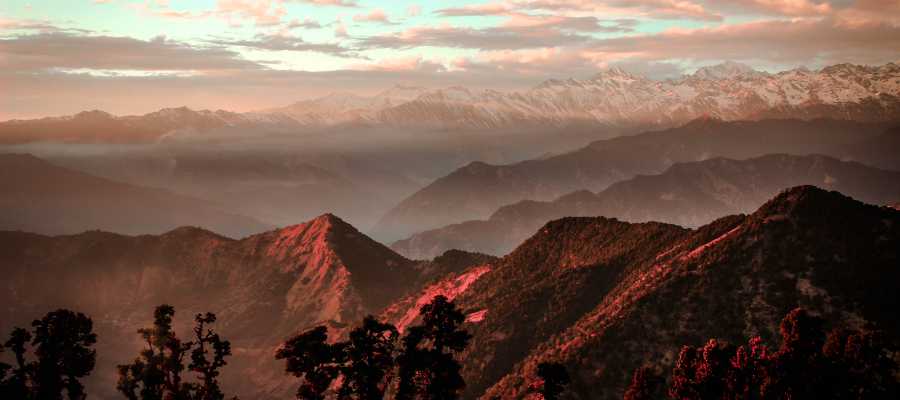
The panoramic views from Tungnath are breathtaking, and the temple holds great religious significance.
a) Chandrashila Peak
For adventure enthusiasts, Chopta provides access to the Chandrashila Peak. The trek to Chandrashila offers a 360-degree view of the Himalayan ranges, including the majestic peaks of Nanda Devi, Trishul, and Chaukhamba. The summit is especially popular for sunrise and sunset views.
b) Deoria Tal
The trek to Deoria Tal is relatively easy, making it suitable for all age groups. The reflection of Chaukhamba peaks in the lake’s crystal-clear waters creates a postcard-perfect scene.
38. Dehradun, Uttarakhand
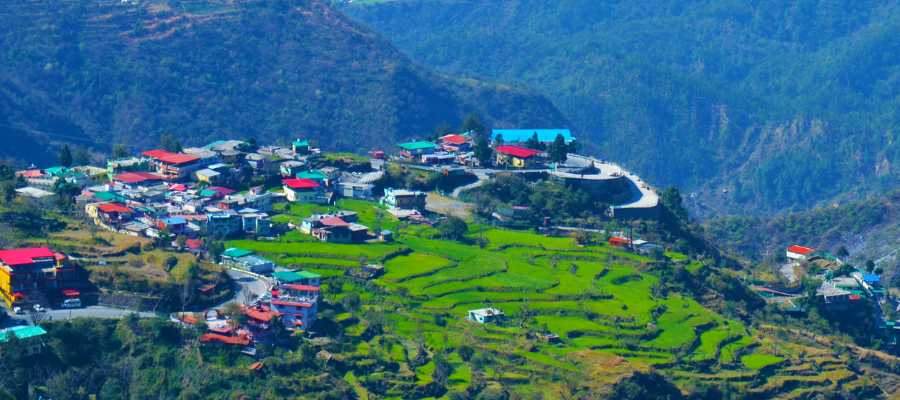
Dehradun is a vibrant city that seamlessly blends urban amenities with natural beauty.
a) Robber’s Cave
Robber’s Cave, or Guchhupani, is a natural cave formation where a stream flows underground.
b) Forest Research Institute (FRI)
The Forest Research Institute, an architectural masterpiece, is a premier institute for forestry research. With its colonial architecture and botanical gardens, the sprawling campus is delightful for a stroll.
c) Sahastradhara
Sahastradhara, meaning “The Thousand-fold Spring,” is a natural attraction known for its therapeutic sulfur springs. The cascading waterfalls and the surrounding limestone caves create a rejuvenating environment.
39. Kullu, Himachal Pradesh

Kullu, often called the “Valley of Gods,” is a picturesque destination in Himachal Pradesh. Nestled along the banks of the Beas River, surrounded by snow-clad peaks and lush greenery, Kullu is known for its scenic landscapes and vibrant cultural heritage.
a) Great Himalayan National Park
Trekking trails in the park offer a chance to explore its pristine wilderness.
b) Adventure Hub
Kullu is a popular hub for adventure activities, with opportunities for paragliding, river rafting, and trekking. Solang Valley, a short distance from Kullu, is renowned for its winter sports, including skiing and snowboarding.
c) Raghunath Temple and Bijli Mahadev Temple
Raghunath Temple, dedicated to Lord Rama, is a prominent religious site in Kullu. The temple is known for its intricate carvings and wooden architecture.
Bijli Mahadev Temple, situated on a hill, offers panoramic views of the Kullu Valley and the confluence of the Beas and Parvati rivers.
d) Local Handicrafts and Culture
Kullu is famous for its handwoven shawls, known as Kullu shawls, which showcase vibrant colors and intricate patterns. The town’s cultural festivals, including the Kullu Dussehra, attract visitors from far and wide.
e) Picturesque Landscapes
With its picturesque landscapes, cultural richness, and adventure offerings, Kullu is a destination that appeals to nature enthusiasts and adventure seekers, making it a quintessential part of Himachal Pradesh’s tourism circuit.
40. Kumbhalgarh Fort, Rajasthan
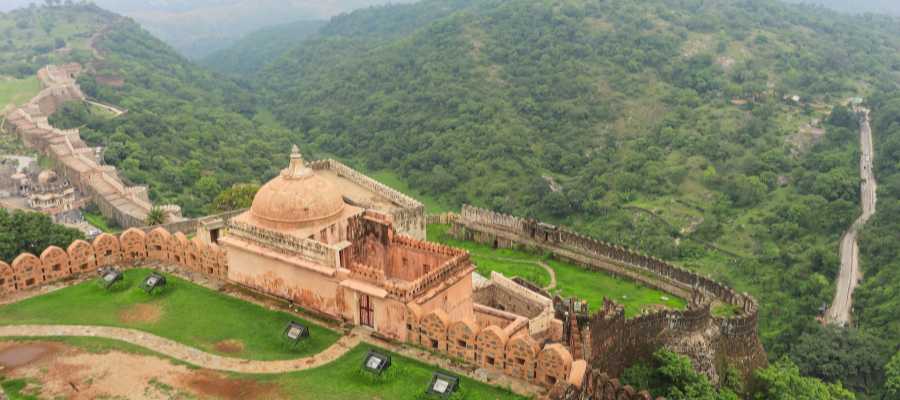
The most notable feature of Kumbhalgarh is its 36-kilometer-long wall, the second-longest continuous wall in the world after the Great Wall of China.
a) Kumbha Palace and Badal Mahal
Within the fort, the Kumbha Palace, with its courtyards and audience halls, showcases the grandeur of Rajput architecture.
b) Neelkanth Mahadev Temple
The Neelkanth Mahadev Temple, situated within the fort complex, is a sacred site dedicated to Lord Shiva.
c) Wildlife Sanctuary
The Kumbhalgarh Wildlife Sanctuary surrounding the fort is home to various flora and fauna. The sanctuary is known for wildlife and nature lovers, with sightings of leopards, sloth bears, and various bird species.
d) Light and Sound Show
The fort comes alive in the evenings with a captivating light and sound show that narrates the history and legends associated with Kumbhalgarh. The show adds a touch of drama to the already awe-inspiring atmosphere of the fort.
41. Bikaner, Rajasthan
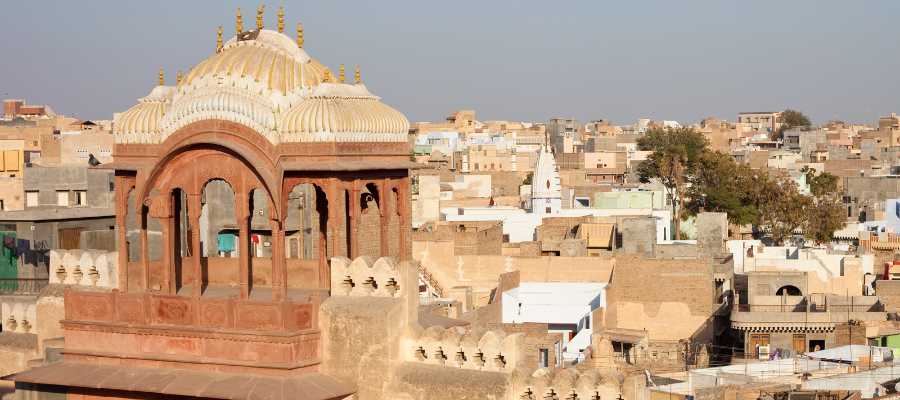
Bikaner, situated in the Thar Desert of Rajasthan, is a city that reflects the grandeur of Rajputana architecture and culture. Known for its well-preserved palaces, vibrant markets, and camel breeding farms, Bikaner is a unique blend of history and desert landscapes.
a) Junagarh Fort
Junagarh Fort, a formidable structure built by Raja Rai Singh in the 16th century, is a major attraction in Bikaner. The fort showcases various architectural styles, including Rajput, Mughal, and Gujarati influences.
The ornate palaces, courtyards, and temples within the fort complex depict the luxury of the Bikaner royalty.
b) Karni Mata Temple
The Karni Mata Temple in Deshnok near Bikaner is known for its resident population of rats, which devotees consider sacred. The temple attracts pilgrims seeking the blessings of Karni Mata, a revered sage.
c) Camel Breeding Farm
Bikaner is renowned for its National Research Centre on Camel, which houses a camel breeding farm. Visitors can experience camel rides and learn about the significance of camels in the desert ecosystem.
The Camel Festival, held annually, showcases camels’ cultural and economic importance in the region.
d) Laxmi Niwas Palace and Lalgarh Palace
Laxmi Niwas Palace, a grand Indo-Saracenic architectural marvel, was the former residence of the Bikaner royal family.
The palace, now a luxury hotel, exudes regal charm. Lalgarh Palace, built in memory of Maharaja Lal Singh, is another architectural gem featuring intricate carvings and a museum displaying royal artifacts.
e) Bikaneri Bhujia and Local Markets
Bikaner is famous for its savory snack, Bikaneri Bhujia, a spiced and fried chickpea flour. The local markets, such as the vibrant Kote Gate, offer a variety of handicrafts, textiles, and traditional Rajasthani items.
With its desert allure, architectural splendor, and cultural vibrancy, Bikaner invites travelers to explore the rich tapestry of Rajasthan’s heritage in a less-explored part of the Thar Desert.
42. Ajmer, Rajasthan
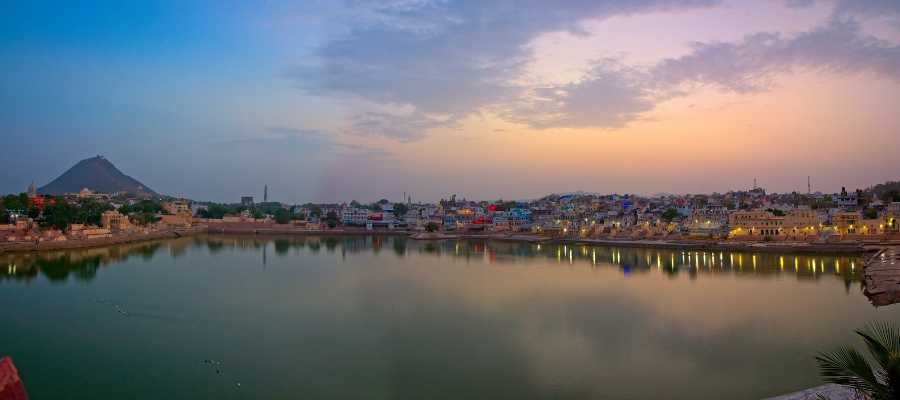
Ajmer, situated in the heart of Rajasthan, is known for its spiritual significance and historical charm. The city’s most prominent landmark is the Ajmer Sharif Dargah, a Sufi shrine dedicated to the revered saint Khwaja Moinuddin Chishti.
Pilgrims from different corners of the world visit the Dargah to seek blessings and participate in the Sufi rituals that resonate with an atmosphere of devotion and harmony.
The annual Pushkar Camel Fair attracts travelers and traders from around the globe, creating a vibrant atmosphere with cultural events, competitions, and the spectacle of thousands of camels.
Pahalgam, often called the “Meadow of Shepherds,” is a scenic town in the Anantnag district of Jammu and Kashmir. Nestled along the banks of the Lidder River and surrounded by lush meadows and pine forests, Pahalgam is a haven for nature lovers and adventure enthusiasts.
a) Betaab Valley
Betaab from the Bollywood Movie is a breathtaking landscape of meadows, crystal-clear streams, and snow-capped peaks. The tranquility and natural beauty make Betaab Valley a perfect spot for picnics and relaxation.
b) Aru Valley
Aru Valley, surrounded by coniferous forests and alpine meadows, is a base for trekking and camping.
c) Chandanwari and Amarnath Yatra
Chandanwari is the beginning point of the Amarnath Yatra. It is known for its picturesque beauty and starts at the Amarnath Cave, a pilgrimage site dedicated to Lord Shiva. The annual pilgrimage attracts devotees from across the country.
d) Lidder River Rafting
The Lidder River flowing through Pahalgam offers thrilling opportunities for white-water rafting. The gushing river, surrounded by the spectacular scenery of the Himalayas, provides an adrenaline-pumping adventure for water sports enthusiasts.
e) Pahalgam Golf Course
The Pahalgam Golf Course, surrounded by dense pine forests and snow-capped peaks, is one of the most scenic golf courses in the world. Golf lovers can enjoy a game of golf amidst the breathtaking landscapes.
With its serene landscapes and adventure offerings, Pahalgam stands as a jewel in the crown of Jammu and Kashmir, inviting travelers to explore its natural wonders.
The Dharamshala Cricket Stadium is a unique sports venue nestled amidst the breathtaking landscapes of Dharamshala. Surrounded by the Dhauladhar mountain range, the stadium is one of the most picturesque cricket grounds in the world.
f) Altitude and Climate
The stadium’s location offers players and spectators a cool and refreshing climate, especially during summer. The snow-capped peaks in the backdrop create a stunning visual spectacle.
g) International Matches
The stadium gained international recognition after hosting its first One Day International (ODI) match between India and England in 2013.
Since then, it has become a sought-after venue for international and domestic cricket matches, attracting cricket enthusiasts worldwide.
h) Unique Setting
What sets the Dharamshala Cricket Stadium apart is its unique setting. The snow-covered mountains, lush green outfield, and clear blue skies create a surreal ambiance that adds to the cricketing experience.
i) HPCA Museum
The Himachal Pradesh Cricket Association (HPCA) Museum, located within the stadium complex, showcases memorabilia, cricketing artifacts, and the history of {in Himachal Pradesh.
The museum provides insights into the region’s cricketing heritage.
43. Dharamshala
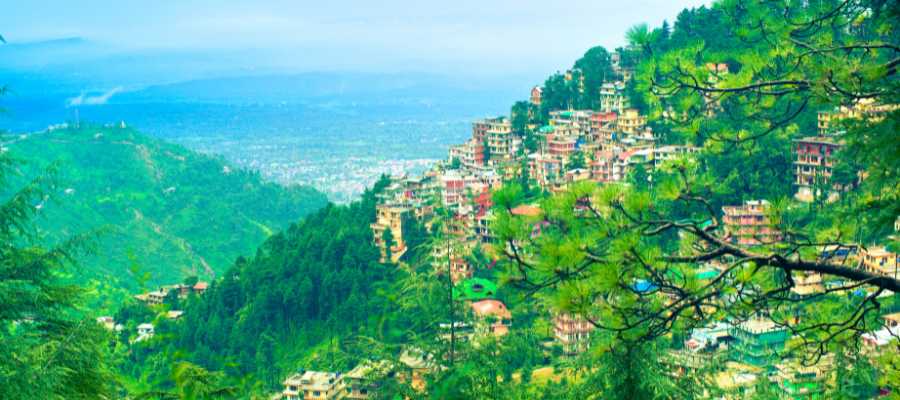
Beyond cricket, Dharamshala, a popular hill station in Himachal Pradesh, offers visitors a range of attractions, including the Tibetan Buddhist monastery, McLeod Ganj, and the Dalai Lama’s residence.
The town’s cultural diversity and natural beauty make it a captivating tourist destination.
The Dharamshala Cricket Stadium, with its breathtaking backdrop and cricketing fervor, stands as a testament to the unique fusion of sports and natural beauty in the heart of the Himalayas.
44. Corbett Waterfall, Uttarakhand
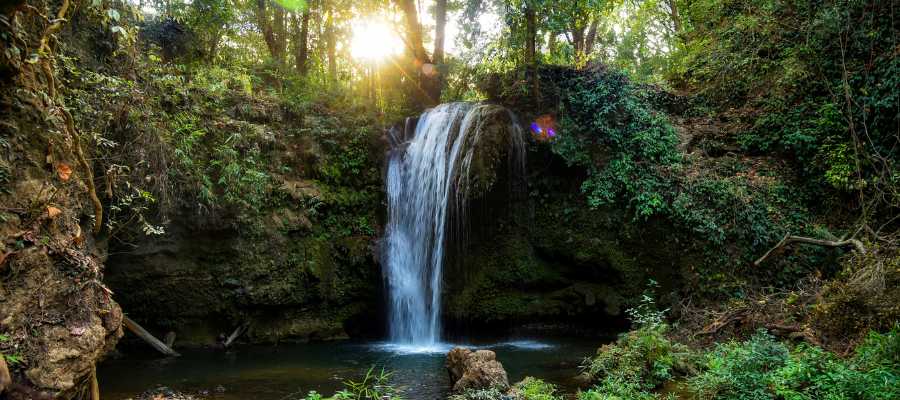
a) Natural Symphony
Corbett Waterfall, nestled in the heart of Uttarakhand near the Jim Corbett National Park, is a breathtaking cascade that adds a touch of natural symphony to the dense forests and pristine landscapes.
Surrounded by thick greenery, the waterfall creates a tranquil ambiance, making it a popular spot for nature enthusiasts and picnickers.
b) Lush Greenery and Wildlife
The journey to Corbett Waterfall involves a scenic drive through the lush greenery of the national park.
The area is known for its rich biodiversity, and lucky visitors might catch glimpses of the diverse wildlife, including various species of birds, deer, and, if fortunate, the elusive big cats.
c) Accessible Beauty
Corbett Waterfall is easily accessible, making it a favored destination for travelers seeking a quick escape into nature.
The sound of cascading water, the cool mist in the air, and the lush surroundings create an idyllic setting for those looking to unwind amidst the serenity of the Himalayan foothills.
d) Picnic Delight
The surroundings of Corbett Waterfall offer ample space for picnics and strolls. Families and groups of friends often visit the area to enjoy a day out in nature, relishing the beauty of the waterfall and the peaceful atmosphere.
e) Trekking Trails
For those seeking more adventure, the region around Corbett Waterfall provides trekking trails that lead to hidden gems within the forested landscape.
The trekking experience, combined with the soothing sound of the waterfall, offers a perfect blend of adventure and tranquility.
f) Best Time to Visit
The best time to see Corbett Waterfall is the monsoon time when the waterfall is full. The greenery becomes even more elegant, and the rejuvenated surroundings create a captivating spectacle.
Corbett Waterfall, with its accessible beauty and natural charm, stands as a testament to the untamed allure of Uttarakhand’s wilderness.
45. Hawa Mahal, Jaipur, Rajasthan

a) Architectural Marvel
Hawa Mahal is an iconic architectural marvel in the heart of Jaipur, Rajasthan. This distinctive five-story palace is known for its intricate latticework and unique honeycomb design.
b) Ventilation and Cooling
The palace’s numerous windows, small balconies, and latticework provided a discreet vantage point and facilitated natural ventilation, earning it the name “Palace of Winds.”
c) Pink City Landmark
Hawa Mahal is a prominent landmark in Jaipur, contributing to the city’s moniker as the “Pink City.” The building is constructed with pink sandstone, a signature feature of Jaipur’s architecture.
The palace’s façade, adorned with over 900 intricately carved windows, creates a mesmerizing sight reflecting Rajasthan’s cultural richness.
d) Architectural Elements
The palace’s design is a fusion of Rajput and Mughal architectural styles. The unique pyramidal shape, resembling Lord Krishna’s crown, adds to the regal allure of Hawa Mahal.
The intricate carvings, domed canopies, and delicate floral patterns showcase the skilled craftsmanship of the artisans of that era.
e) Jharokhas and Courtyards
Hawa Mahal features numerous jharokhas (overhanging enclosed balconies) that provide panoramic city views. The palace also houses courtyards, adding a touch of tranquility amidst the bustling city.
The architecture is a testament to the foresight of the rulers who prioritized aesthetics and practicality.
f) Cultural Significance
Hawa Mahal is not just a historical structure but a symbol of Jaipur’s rich cultural heritage. Visitors can explore the palace’s various chambers and learn about the royal lifestyle.
The museum within the palace exhibits artifacts and relics, narrating the story of Jaipur’s royal past.
With its regal splendor and architectural brilliance, Hawa Mahal continues to captivate visitors, offering a glimpse into the grandeur of Rajasthan’s royal history.
46. Jodhpur, Rajasthan

Dominating the skyline of Jodhpur is the majestic Mehrangarh Fort in India. The fort offers panoramic views of the city.
The intricate carvings, expansive courtyards, and well-preserved artifacts within the fort provide a glimpse into the royal history of Marwar.
a) Umaid Bhawan Palace
Umaid Bhawan Palace, a magnificent architectural marvel, serves as a living testament to the royal legacy of Jodhpur.
The palace, built during the rule of Maharaja Umaid Singh, combines traditional Rajputana and European architectural styles. Today, part of the palace is a museum, and another section serves as a luxury hotel.
b) Mandore Gardens
Mandore Gardens, located a short distance from the city center, is an architectural complex housing cenotaphs, temples, and memorials dedicated to Marwar rulers.
The lush gardens and the intricate architecture of the memorials make Mandore a serene and historically significant site.
c) Clock Tower and Sardar Market
The Clock Tower, or Ghanta Ghar, is a prominent landmark in the heart of Jodhpur. The nearby Sardar Market is a bustling hub where residents and visitors gather to explore vibrant stalls selling textiles, handicrafts, spices, and traditional Rajasthani items.
d) Culinary Delights
Jodhpur is a paradise for food lovers, offering a delectable array of Rajasthani cuisine. The city’s culinary offerings are a gastronomic delight, from the famous Mirchi Bada and Makhaniya Lassi to the rich flavors of Dal Baati Churma.
e) Cultural Festivals
Jodhpur comes alive during cultural festivals like the Marwar and Rajasthan International Folk Festival (RIFF). These events showcase the city’s rich cultural heritage through music, dance, and traditional performances.
With its blue-hued charm, regal forts, and vibrant culture, Jodhpur invites travelers to immerse themselves in the splendor of Rajasthan’s architectural and historical legacy.
Conclusion
In conclusion, Northern India stands as a treasure trove of cultural, historical, and natural wonders, offering travelers an unparalleled tapestry of experiences.
The 46 tourist places explored in this blog represent just a glimpse into the vast richness of this region.
From the majestic peaks of the Great Himalayan National Park in Himachal Pradesh to the iconic Taj Mahal in Agra, each destination narrates a unique story steeped in history, spirituality, and breathtaking landscapes.
The spiritual aura of Varanasi, the architectural marvels of Jaipur’s Pink City, the serene lakes of Udaipur, and the bustling markets of Delhi – Northern India unfold as a diverse kaleidoscope, catering to every kind of traveler.
Whether you seek the tranquility of the Valley of Flowers in Uttarakhand, the adrenaline rush of wildlife safaris in Ranthambore, or the soul-stirring experiences in Amritsar’s Golden Temple, this region has it all.
Northern India’s cultural vibrancy is evident in the bustling bazaars, the colorful festivals, and the warm hospitality of its people. Each destination adds a unique flavor to the tapestry, making the journey through North India an immersive and transformative experience.
As you traverse through the sacred ghats of Varanasi, the vibrant streets of Chandni Chowk in Delhi, or the tranquil tea gardens of Darjeeling, you not only witness the grandeur of historical monuments but also the living history embedded in the daily lives of the locals.
The amalgamation of tradition and modernity, ancient rituals, and contemporary lifestyles creates an enriching mosaic quintessentially Northern India.
Whether you are an adventure seeker, history enthusiast, nature lover, or a connoisseur of diverse cuisines, Northern India beckons with open arms.
